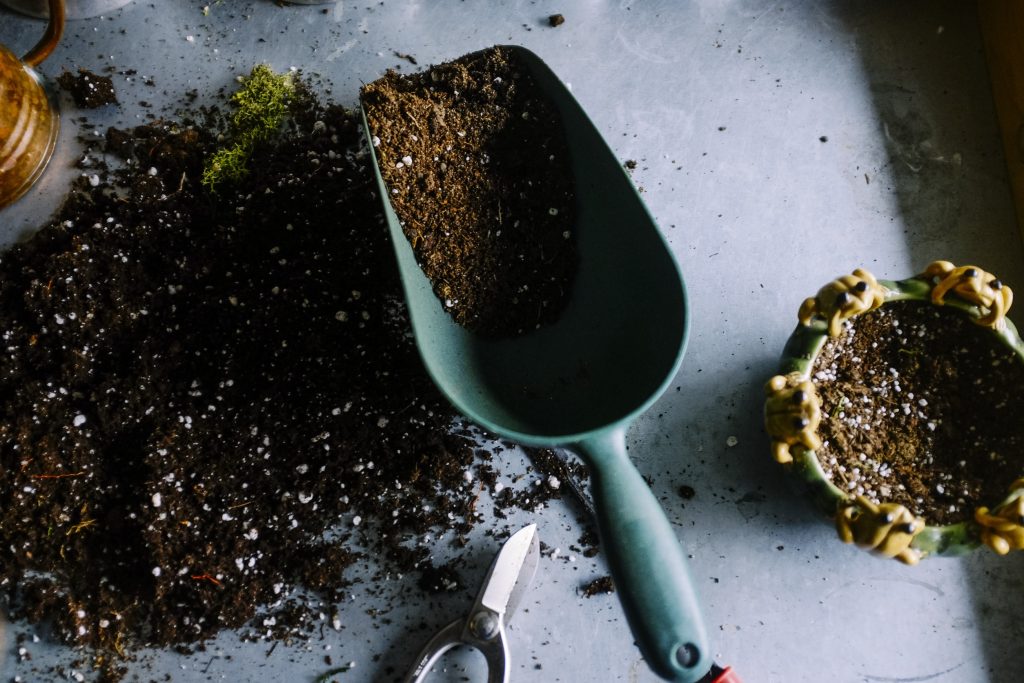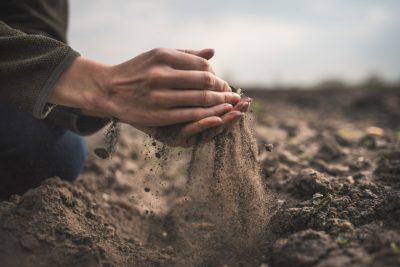Jordan Valley
What is a soil analysis?
A soil analysis helps you to optimize the growing conditions for your crop, your soil is not like anyone else's. It may even vary in the same field. With the help of a soil analysis, you can make your fertilization more efficient, avoid nutrient leaching and save money, time and resources.
A soil sample is analyzed to find out its chemical and physical properties. This information is used to determine the suitability of the soil for different uses such as agriculture, horticulture or construction. Soil analysis can provide different types of information depending on the type of soil analysis performed, such as soil pH, nutrient content and particle size. The results of a soil analysis can be used to improve soil health and productivity.

What soil analysis does LMI do?
LMI has long experience of professional soil analysis. Our laboratory performs Spurway analysis, AL analysis, CAT analysis, HCL analysis, Visibility curve etc.
Laneway
The trace analysis shows the amount of plant nutrients available in the soil for the plants in the coming weeks/months. To obtain a basis for basic fertilization, samples are taken during winter/spring. But the analysis is also used for continuous monitoring of a crop with analysis about every four weeks (depending on the crop). Then any detected nutrient deficiency can be addressed in time by supplementary fertilization. The Spurway analysis is therefore sometimes called the Operational Analysis, which refers to the fact that it is used during the "operation", i.e. during the actual cultivation.
The Spurway analysis is carefully designed to extract plant nutrients in a way that closely mimics the ability of roots to take up nutrients from the soil. We have set points that show how nutrient levels should be adapted to many different crops.
The analysis includes pH, conductivity and plant nutrients: nitrate nitrogen, ammonium nitrogen, phosphorus, potassium, magnesium, sulfur, calcium, manganese, boron, iron, sodium and aluminum.
Optional "Micro" analysis includes copper, zinc and molybdenum extracted with chelate. It should always be chosen in case of suspected deficiencies or if you have new soil that you do not know.
Trace analysis results are provided by email the next working day after the sample reaches LMI. Read more about Spurway analysis...
AL analysis
The AL analysis shows the amount of phosphorus, potassium, calcium and magnesium available in the next few years in the soil's nutrient supply. The soil pH and K/Mg ratio are also given. For phosphorus and potassium, the class is given, which is a way of categorizing the levels of these substances in the soil, and is often used as a basis for fertilization in agriculture. Clay and loamy soils hold more phosphorus and potassium, while sandy soils hold lower levels.
AL stands for ammonium lactate, which is the extraction liquid used in the AL analysis. The method is used to quantify the amount of plant nutrients that can be utilized in the coming years and allows fertilization planning. Read more about AL analysis...

Other analyses
- HCl analysis is used for soil mapping to gain knowledge of the long-term soil stores of copper, potassium and phosphorus.
- CAT analysis extracts plant nutrients with calcium chloride and EDTA chelate. It is used for most of the plant nutrients, especially micronutrient.
- Boron hot water method is a method to extract boron. Boron is readily soluble and a water extraction is sufficient to obtain a measure of boron availability.
- Moisture content measures the content of organic matter in the soil, by analysis of loss on ignition with correction for clay content.
- Lerhalt är jordens innehåll av lerpartiklar (<0,002 mm) och analyseras genom sedimentationsanalys. Denna ingår också i Siktkurva.
- Sieve curve shows the soil grain size distribution clay-silt-sand-gravel, 0-2 or 0-20 mm. Our sieve curve analyzes the grain size distribution in the mineral part of the soil. We do not make sieve curve for organic soils and soil improvers.
- Heavy metals are extracted by boiling with strong acid. Typically, arsenic, cadmium, chromium, copper, mercury, nickel, lead and zinc are included. In fertilizers or substrates and soil conditioners for organic farming, silver is analyzed instead of arsenic. Some other substances can be analyzed on request.
We can also help with analyses that we do not perform ourselves in our lab, such as pesticides, PAH, PFAS and most environmental analyses.
Sampling
Take at least 10 subsamples, which are mixed into a composite sample.
When sampling in the field, use a soil auger. Walk diagonally across the field (or in a circle where you know the soil is representative). In case of repeated sampling, take samples along the same line. The sample should be taken as deep as there are working roots. Normally the whole topsoil layer is sampled, about 25 cm (on golf courses 10 cm is recommended, possibly divided into 0-3 cm and 3-10 cm as dressing with sand and peat often results in low surface pH). For hilled crops such as potatoes, the sample is taken diagonally through the hive, i.e. not on the top and not on the bottom of the hives. For drip irrigation, the sample is taken diagonally through the drip point.
For soil mapping, samples are taken at predetermined GPS points. Ten soil samples are taken within a radius of 3-5 m from the center of the coordinate. The sample is taken in the topsoil layer, 20-30 cm deep.
When sampling potted plants, take a sample from the part of the potted clump that contains roots. The top layer is often salt contaminated and should not be included. Take a sector from each clump from at least 10 different pots representative of the culture; it is usually possible to drag the thumb from the start of the roots down the clump to get a piece of the clump. Avoid taking pots from the edges of tables and not from dried out plants.
After thorough mixing of the subsamples, 0.5 liters of soil is taken for analysis. Pack in sample box or in plastic bag.
För CAT analyser och Siktkurva <2mm behöver vi 1,5 liters jord. För siktkurva <20mm (AMA paket) behöver vi minst 2 liters jord.
Consignment note
Attach the delivery note with the sample number/sample name, plant species and indicate if it is from organic farming. Remember to include the name and invoicing details (including organization number/personal number), invoice e-mail, as well as the e-mail address of the persons to whom we will send the results. For delivery notes...

